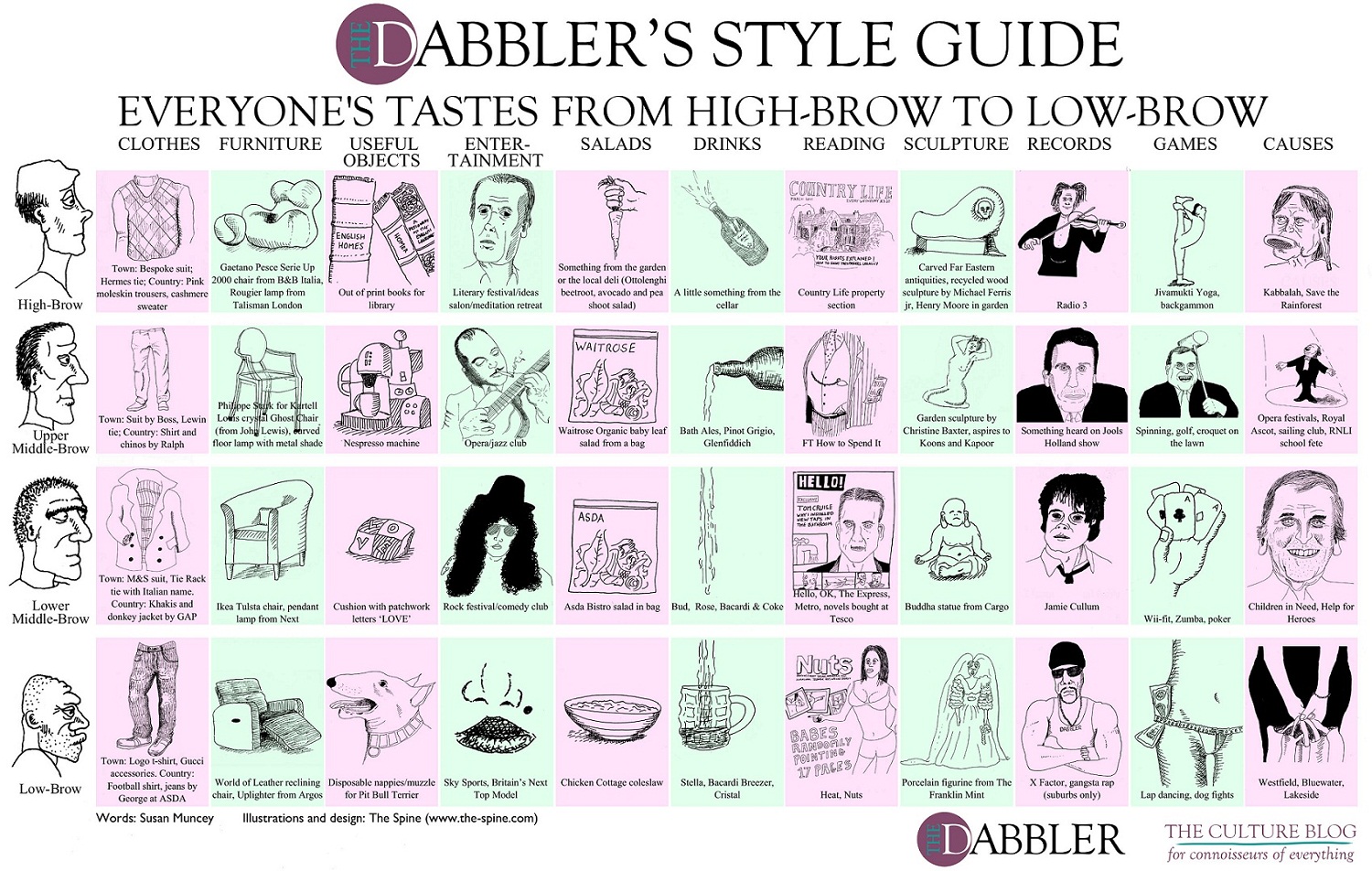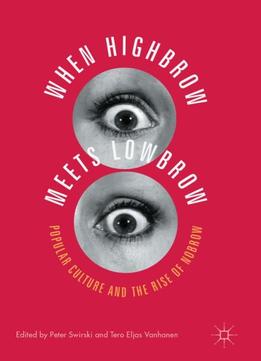

Although middlebrow often has connoted contempt, Lynes lauded the zeal and aspirations of the middlebrows. That began a national preoccupation, as people tried to identify their proper social class, based upon their favourite things. Months later, Life magazine asked Lynes to specifically distinguish among the right foods, furniture, clothes, and arts for each of the four 'brows'. Caricaturing Woolf, Lynes outlined the perfect world without middlebrows lowbrows work and highbrows create pure art. They also intend to live the simple, easy life outlined in advertisements "lower middlebrow-ism" was "a world that smells of soap".


The lower middlebrows attempt using the arts for self-enhancement: "hell-bent on improving their minds as well as their fortunes". Museums, orchestras, operas, and publishing houses are run by upper-middlebrows. The upper-middlebrow's arts patronage makes highbrow activity possible. Lynes continued distinguishing among "brows", dividing middlebrow into upper-middlebrow and lower-middlebrow. Specifically, he parodies the highbrow claim that the products a person uses distinguishes his or her level of cultural worth, by satirically identifying the products that would identify a middlebrow person. Quoting her and other highbrow proponents, such as art critic Clement Greenberg, Lynes parodied the highbrow's pompous superiority by noting how the subtle distinctions Woolf found significant among the "brows" were just means of upholding cultural superiority. Harper's Magazine editor Russell Lynes satirized Virginia Woolf's highbrow scorn in the article "Highbrow, Lowbrow, Middlebrow". Russell Lynes: "Highbrow, Lowbrow, Middlebrow" Instead of such freedom, the middlebrows are "betwixt and between", which Woolf classifies as "in pursuit of no single object, neither Art itself nor life itself, but both mixed indistinguishably, and rather nastily, with money, fame, power, or prestige." Their value system rewards quick gains through literature already designated as 'Classic' and 'Great', never of their own choosing, because "to buy living art requires living taste." The middlebrow are meretricious-which is much less demanding than authenticity. Likewise, a lowbrow is devoted to a singular interest, a person "of thoroughbred vitality who rides his body in pursuit of a living at a gallop across life" and, therefore, the lowbrow are equally worthy of reverence, as they, too, are living for what they intrinsically know as valuable. Woolf said that, "We highbrows read what we like and do what we like and praise what we like". Middlebrows are concerned with how what they do makes them appear, unlike highbrows, the avant-garde men and women who act according to their indelible commitment to beauty, value, art, form, and integrity. Rather than selecting books for their intrinsic cultural value, middlebrow people select and read what they are told is best. Woolf criticizes middlebrows as petty purveyors of highbrow cultures for their own shallow benefit. That letter was posthumously published in the essay collection The Death of the Moth (1942). Virginia Woolf derided the middlebrow in an un-posted letter to the editor of the New Statesman & Nation, concerning a radio broadcast that attacked the Highbrows. Culturally, the middlebrow is classed as a forced and ineffective attempt at cultural and intellectual achievement, and as characterizing literature that emphasises emotional and sentimental connections, rather than intellectual quality and literary innovation although postmodernism more readily perceives the advantages of the middlebrow cultural-position that is aware of high culture, but is able to balance aesthetic claims with the claims of the everyday world. The term middlebrow became a pejorative usage in the modernist cultural criticism, by Dwight Macdonald, Virginia Woolf, and Russell Lynes, which served the cause of the marginalisation of the popular culture in favour of high culture. 5 Dwight Macdonald: "Masscult and Midcult".3 Russell Lynes: "Highbrow, Lowbrow, Middlebrow".


 0 kommentar(er)
0 kommentar(er)
